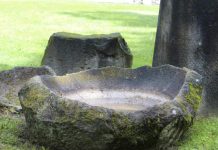The World Takes Wing – The Adventure of Flight? The first intrepid aviators who lifted off in heavier-than-air machines were all too aware of the huge gulf between the urge to fly and the strenuous, dangerous business of keeping a plane aloft. But thanks to the risks they took in testing out new technology. The aircraft quickly improved until they were safe and reliable enough to carry fare-paying passengers.
Instrument panels on the earliest airplanes were rudimentary in the extreme. To get their bearings and judge conditions as they flew, pilots simply kept their eyes peeled and looked around them. On clear, days using observation with the naked eye, it was relatively easy to tell if the plane was flying straight and level.
Moreover also judge maneuvers involving climbing, descent, and banking with reasonable accuracy. If pilots lost their way, all they needed to do was drop down low enough to pick up a railway line. Then follow it to a station and read large signs on the platforms. But the moment a plane flew into a cloud, visibility disappeared and the risk of an accident increased dramatically.
Breakthrough in Aerial Navigation
When making his cross-channel flight in 1909, the only instrument and board Bleriot’s Type XI monoplane was a fuel gauge. But before long, cockpits began to fill with instruments that made flying a less haphazard affair. From 1941 onwards, most aircraft were equipped with an airspeed indicator, an altimeter, a rev counter a thermometer, a clock, and a roller map. Radios were introduced very early on, but their usefulness was limited as aerials that would allow anything but very short-range communication were too heavy.
The answer was a radio receiver and directional antenna linked to a dial to tell the pilot or navigator where incoming radio compasses were fitted with a small electric motor that kept the antenna turning constantly. As night flying became more commonplace, well-used air routes were marked with beacons along their entire course. But again, this system only really worked in fair weather conditions.
The first airport serving London was at Croydon, which opened to commercial traffic in 1920. However, in 1933 to cater to the growth in air travel, the Air Ministry approved commercial flights from Gatwick. Heathrow was opened in 1946. Read More – The Mystery of Utsuro-Bune

Product You May Like It
- Popular Battery Reconditioning Course
- Learn How To Build A 3d Solar Panel Converts Like Crazy, and Save a Lot of Money?
- The Ultimate Energizer Guide With Serious Green Folding Stuff.







